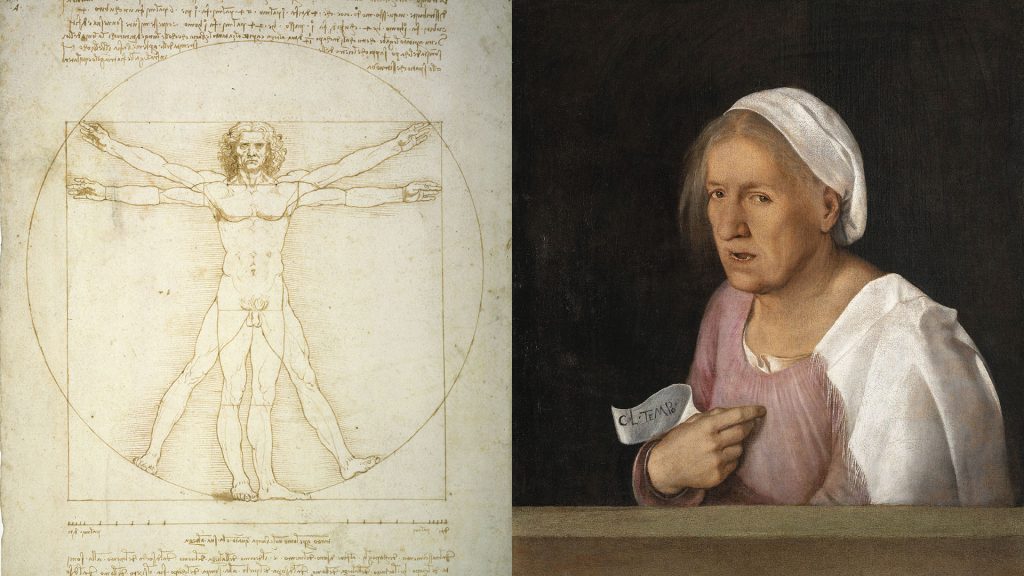
81. Venice Film Festival

80. Venice Film Festival

79. Venice Film Festival

The Biennale Arte Guide
Foreigners Everywhere

The Biennale Architecture Guide
The Laboratory of the Future

The Biennale Arte Guide
Il latte dei sogni

The Making of the Body in Renaissance Venice. Leonardo, Michelangelo, Dürer, Giorgione, on view at the Gallerie dell’Accademia in Venice until July 27, offers a journey that, without yielding to the temptation of spectacle, leads visitors through a focused reflection on the conception of the human body in Renaissance Venice.
In 2017, art historians Tomaso Montanari and Vincenzo Trione published a curious pamphlet whose caustic content would later come to haunt the sleep of every museum director, critic, historian, or professional involved in organizing an exhibition. Against Exhibitions, as the title reads, was once recommended to me by a dear university professor in my first year of studies when still inexperienced me was trying to find my way through the thick of art criticism. Since then, that rather cantankerous booklet has guided every museum, gallery, and exhibition visit I’ve ever made, serving as a kind of compass pointed against what is known as the “Italian vice” – organizing ever more shows “of little or no cultural value, devoted to a fleeting spectacle aimed at its own self-gratification, empty in what they have to offer and leaving behind virtually nothing.” How can one argue with Montanari, especially in a city like Venice, where everything is forced to bow before the sacred altar of tourism?
Yet, in this bleak landscape, there are isolated cases that not only of avoid the ephemeral but also of restoring the curator’s gesture to its highest purpose: to question, to challenge, to spark doubt. Corpi moderni, at the Gallerie dell’Accademia, is one of these welcome exceptions. This journey, without succumbing to the temptation of pure spectacle, leads visitors into an intense reflection on the conception of the human body in Renaissance Venice and on how that ancient discourse, if we look at it closely, remains essentially our own. Curated by Guido Beltramini, Francesca Borgo, and Giulio Manieri Elia, the exhibition brings together 89 extraordinary artworks, including drawings, paintings, and sculptures from the most prestigious national and international museums and collections. Adding to the exceptional value these masterpieces show by sheer virtue of being displayed side by side is an intelligent, sober installation which, while not abandoning its inherent aesthetic vocation, manages to deliver a clear, cohesive, and unified narrative.
Our itinerary will have us venture into our innermost depths, into the entrails of the human body, flayed, overturned, and reassembled on the cold steel panels. This is a clear reference to the anatomical tables that, between the fifteenth and sixteenth centuries, established Venice and Padua as the centres of new medical and scientific knowledge founded on the exploration of the body as a non-ideal object to be mapped, studied, and measured. Here, some anatomical drawings by the greatest Renaissance artists are on display: from Michelangelo to Piero della Francesca, from Leonardo to Dürer, the subjects are no longer men but muscles, bones, and internal organs, rendered in minute detail on bare paper.
Surprisingly, the exhibition also offers an unprecedented comparison between Leonardo’s renowned Vitruvian Man – now on display after a six-year hiatus – and a rarely known work, Albrecht Dürer’s Self-Portrait as a Nude, a true first in art history which, precisely due to its close affinity with the more famous counterpart, regains dignity and fresh light.
La costruzione del corpo nella Venezia del Rinascimento